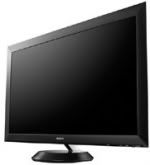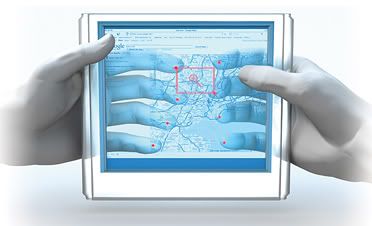Google's new Chrome web browser beta is getting a lot of attention for its slick looks, helpful features, and performance, but how does it rank against the early releases of more established browsers? We've previously put the major browser releases to the speed test, but today we're measuring Chrome against the second beta of Internet Explorer 8, as well as the beta of Firefox 3's next iteration, 3.1. We tested tomorrow's browsers on startup and page-loading times, JavaScript and CSS performance, and, perhaps most importantly to the average user, memory use on launch and with lots of content loaded. Read on to get the scoop on which bleeding-edge beta has the edge in the browser time trials.
The Tests
As with my previous browser tests, I installed completely fresh copies of the three browsers on my Windows Vista laptop, with all settings left to defaults. With the second beta of Internet Explorer 8, I reset the browser to factory settings and chose whatever Microsoft suggested during the click-through setup.
My test system has the same specs as before: A 2 GHz Intel Core 2 Duo processor, 2GB of memory, and running Windows Vista Home Premium. For the time-based tests, I again used Rob Keir's ultra-lightweight timer app, simultaneously tapping the "" key with "Enter" to launch a browser shortcut or folder full of bookmarks. I performed each test on each browser three times and averaged out the results, while eliminating obvious oddities. (With Vista's often empirical hard drive usage, there were definitely artificially long start-ups).
It's the same system I used to test Internet Explorer 7, Firefox 3 RC3, Safari for Windows, and Opera 9.5, so you can make fair comparisons between all the browsers. It's not scientific in the strict sense, but it's meant to measure browser performance as real humans experience it—load, click, and wait.
Test 1: Startup Time—Winner: Chrome!
Drawing inspiration again from Mark Wilton-Jones trend-setting tests, I timed each browser loading up "cold" load (straight off a system restart) and "warm" (having run twice already). I used a locally-saved copy of Google's minimalist home page to negate net connection variations, and, to compensate for Vista's start-up fickleness, timed each browser exactly two minutes after boot-up. Here are the first results:
Note the small scale of the time on the X-axis: Even though Chrome was (quite surprisingly) slower at startup than Firefox or even IE 8, it's less than a second of difference between them all. That's a bit more than an error from my twitchy fingers, but probably not enough to rate any one browser on. Let's check out the warm boots:
As you can see, Chrome's noticeably fast on reload, although all the results are so close it's hard to confidently crown a winner. Just like last time, IE 8 slightly edges out Firefox on warm boots, but lags just a bit behind when starting up.
You don't start your browser to look at clean, white, locally-saved pages, do you? No, you speed around your must-visit sites, and often keep a bushel of them open at once. For the next test, I led each browser page-by-page through the assortment of web sites pictured at right—some heavy with interactive elements, some just text and pictures—before jumping back to a blank page (entering about:blank does this in any browser) and loading all the links at once. Each browser keeps a spinning icon on tabs as they load, so I measured from first click to the last tab settling in.
IE 8 and Chrome clock in too close to call, but Firefox fell behind. Based on the minuscule difference in cold-boot time and the two warm tests, I'd call Chrome the fastest, but definitely hand IE 8 a Most Improved Player trophy at the awards banquet.
Test 2: JavaScript & CSS—Tie: Firefox & Chrome!
JavaScript continues to grow in importance as a browser benchmark, because it's the backbone of no-reload interfaces like Gmail, Facebook, and lots of other webapps. Once again I used Sean Patrick Kane's revised JavaScript speed tests and averaged out three results to measure the browsers:
Firefox bests Chrome in this test by a handy lead, while IE 8 takes nearly twice as long (in milliseconds, of course) to perform all the actions Sean runs it through. It's anybody's guess who's got the most objective test—CNET's testers show Chrome wrecking all comers, while Mozilla's own tests declare their orange scrapper the winner in tight races. I can only take away that IE 8 is definitely an improvement from IE 7's fall-behind pace, while Chrome and Firefox are pretty evenly matched...
...until I ran the CSS tests, that is. CSS determines the layout and appearance of a page, and nontropp's downloadable form makes a browser work like a page designer on an all-guarana-and-coffee diet.
In the CSS test, as you can see, Chrome takes a commanding lead, Firefox doesn't lag too far behind, and IE 8 actually stalled and froze on just about one of every two loads I ran. When it came out of memory freeze, it did report consistent times, though—consistently behind. One could hand the Dynamic Web Performance title to Firefox for the probably weightier JavaScript test, but Chrome also shows a notable grace in running down the type frequently found on blogs. Let's call this a tie.
Test 3: Memory Use—Winner: Firefox!
How far the great-great-nephew of Netscape has come in its respect for your system's resources. Measured by Vista's Task Manager from cold boots and then with eight tabs loaded, Firefox shows some serious savvy with megabytes:
Do note, however, that Chrome handles tabs differently than others—each tab loads as its own process, so that if it crashes or stalls, the rest of your reading doesn't go down with it. So if you've got solid-state chips to spare, it's not that much more of a hit to run Chrome in a busy session.
As with our last test, we'll note that browsing is much more than speed and bit usage—many of us can't imagine web life without our favorite extensions, or Windows integration, or, soon enough, Chrome's unique features.
What's been your experience with the newest competitors in the web field? Got your own criteria to compare? Share it all in the comments.
Kevin Purdy, associate editor at Lifehacker, wrote this feature in all three beta browsers. His weekly feature, Open Sourcery, normally appears Fridays on Lifehacker. Subscribe to the Open Sourcery feed to get new installments in your newsreader.




 LucidTouch phone
Illustration by: Bryan Christie
Apple, Incorporated (AAPL)
Overview News People Financials
Last Trade:172.55Change:-4.24-2.46%
Industry:
Technology
Primary executive:
Steven P. Jobs,
Summary:
The Company and its wholly-owned subsidiaries design, manufacture, and market personal computers, portable digital music … View More
Microsoft Corporation (MSFT)
Overview News People Financials
Last Trade:27.66Change:-0.18-0.65%
Industry:
Technology
Primary executive:
Steven A. Ballmer,
Summary:
The Company develops, manufactures, licenses, and supports a range of software products for many different types of computing devices. View More
Five years ago, Patrick Baudisch found that it was getting harder to dial the minuscule buttons on ever-smaller cell phones; he couldn't see what he was tapping on the keypad while he was holding the phone. What he really needed, he decided, was fingers he could see through. So Baudisch, a scientist at Microsoft Research who was studying human-computer interaction, started working on something more practical: LucidTouch, a digital technology meant to give handheld devices the illusion of transparency. An unusual joint venture formalized in 2006 between Microsoft and Mitsubishi Electric Research Labs, LucidTouch is designed to allow the use of all 10 fingers, unlike the BlackBerry or Treo. It has two touchscreens: one in front of the device, for thumbs, and the other in back, where the fingers (which appear onscreen as digital facsimiles) hold the device and type. The inventors envision creating sensors for the back to do the same job as the camera that’s on their prototype. Another goal: multipoint selection, which lets users pinch, zoom, and drag onscreen icons using several fingers, unlike traditional touchscreens, which respond only to single pokes in particular spots. (Even Apple’s iPhone limits users to two-finger touching.) Industry observers expect LucidTouch to be ready for cell phones, gaming devices, and wristwatches within five years, although some participants in an early focus group found its nontraditional keyboard awkward. "The backs of devices are underused real estate," says Scott Klemmer, a Stanford University computer-science professor. "We're not doing anything with them right now."
LucidTouch phone
Illustration by: Bryan Christie
Apple, Incorporated (AAPL)
Overview News People Financials
Last Trade:172.55Change:-4.24-2.46%
Industry:
Technology
Primary executive:
Steven P. Jobs,
Summary:
The Company and its wholly-owned subsidiaries design, manufacture, and market personal computers, portable digital music … View More
Microsoft Corporation (MSFT)
Overview News People Financials
Last Trade:27.66Change:-0.18-0.65%
Industry:
Technology
Primary executive:
Steven A. Ballmer,
Summary:
The Company develops, manufactures, licenses, and supports a range of software products for many different types of computing devices. View More
Five years ago, Patrick Baudisch found that it was getting harder to dial the minuscule buttons on ever-smaller cell phones; he couldn't see what he was tapping on the keypad while he was holding the phone. What he really needed, he decided, was fingers he could see through. So Baudisch, a scientist at Microsoft Research who was studying human-computer interaction, started working on something more practical: LucidTouch, a digital technology meant to give handheld devices the illusion of transparency. An unusual joint venture formalized in 2006 between Microsoft and Mitsubishi Electric Research Labs, LucidTouch is designed to allow the use of all 10 fingers, unlike the BlackBerry or Treo. It has two touchscreens: one in front of the device, for thumbs, and the other in back, where the fingers (which appear onscreen as digital facsimiles) hold the device and type. The inventors envision creating sensors for the back to do the same job as the camera that’s on their prototype. Another goal: multipoint selection, which lets users pinch, zoom, and drag onscreen icons using several fingers, unlike traditional touchscreens, which respond only to single pokes in particular spots. (Even Apple’s iPhone limits users to two-finger touching.) Industry observers expect LucidTouch to be ready for cell phones, gaming devices, and wristwatches within five years, although some participants in an early focus group found its nontraditional keyboard awkward. "The backs of devices are underused real estate," says Scott Klemmer, a Stanford University computer-science professor. "We're not doing anything with them right now."